As you consider adding a greenhouse for your garden, one of the most important decisions you will need to think about is its location.
Locating Your Greenhouse
To maximize light and plant growth inside your greenhouse, the most optimal orientation of the greenhouse is for one of its longest walls facing south, or within 20 degrees of south. In this orientation, the greenhouse receives morning, mid-day, and afternoon sun.
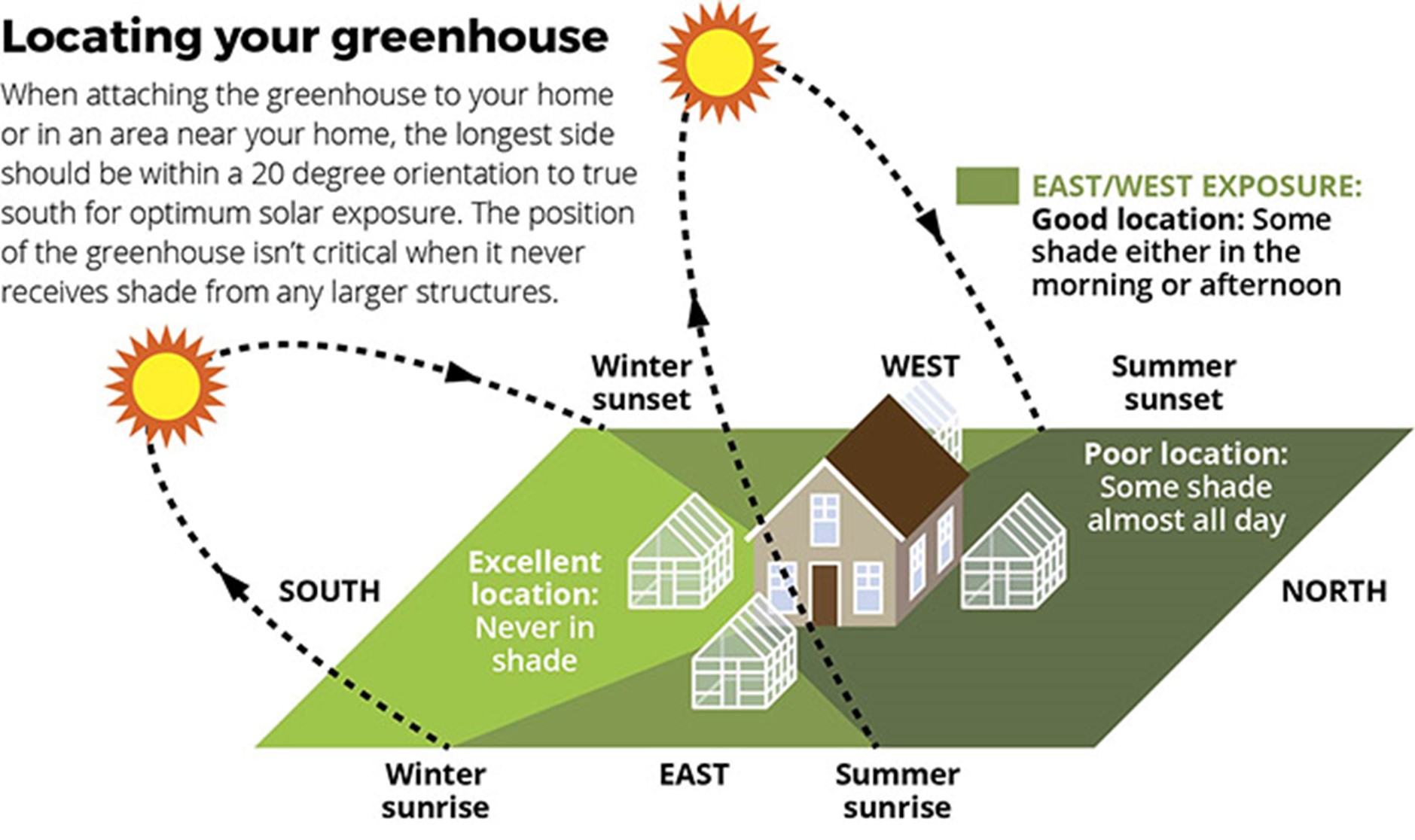
Access to water, electricity, and convenience to the greenhouse from your garden and kitchen are also important considerations. Your greenhouse plants will need water. Having access to water inside your greenhouse is more efficient than hauling buckets or snaking a hose through an open door. Your greenhouse heaters, heat mats, grow lights and fans require electricity. Having GCFI receptacles inside your greenhouse is safer and easier than running extension cords from the home. When you need a snip of rosemary or thyme from your herb garden, a location near your kitchen is helpful. Better yet, consider adding a sink to your greenhouse. Sturdi-Built offers plant benches that are compatible with most drop-in sinks.
Sunlight, Starts, Heat and Growing Plants
The quantity of sunlight is just as important as the quality of sunlight. As greenhouses primarily use the sun’s energy to create heat, a greenhouse that does not receive enough sunlight will not generate enough warmth to keep your plants happy. For growers with less sun in fall, spring, and winter, supplemental heat in the form of gas or electric heaters can assist in keeping greenhouse temperatures where they need to be for your plants to thrive.
Many flowering plants require the maximum possible amount of light for successful growth. Depending on what you are growing and the time of year, too much sun is possible. Plants can get sunburn when there is too much direct sunlight, especially inside a greenhouse. Some plants prefer filtered sunlight. Vegetable and flower starts thrive when the soil is warm, which can happen in direct sunlight. Adding shade cloth, an accessory offered by Sturdi-Built, is a great way to provide shade and filtered light in the warmest months of the year.
For vegetable and flowers, a stand-alone greenhouse should be located with one of its walls facing to the south and a little bit east. If you are going to transplant vegetables and flowering plants into an outside garden, they should receive maximum heat and light. Any plants that need less sunlight should be in an eastern area of the greenhouse.
The most amount of heat accumulates in the greenhouse closer to evening time when the sun begins to descend. A greenhouse needs to breathe to permit warmer air to escape, and to let cooler air in to replace the hot air. An automated venting system on the roof that opens based on temperature is the most hassle-free way to regulate heat. Our jalousie windows can be placed in the side and end walls to permit the greenhouse to catch a natural breeze, so air flows through the greenhouse, and the greenhouse stays temperate.
High Winds
Although the greenhouse is meant to protect the plants from the elements of weather, such as strong wind, it’s fairly crucial that it still provides decent circulation for both the plants and anyone inside.
If you live in an area with extreme winds, if possible, position the greenhouse shielded from the high winds. To shelter your greenhouse from high winds, find a location on the leeward (versus windward) side of your home, garage, or hedge to break or slow the speed of the wind. If you have doors that swing out to open, use some type of door stop to keep the door from hitting the greenhouse, like a potted plant. If you have vents on the roof, install the vents on the leeward side of the greenhouse roof so there is less risk of damage.
Make sure that the greenhouse spot has at least 3 to 4 feet of space to allow the air to pass easily through the vent and protect the plants inside from circulation.
Picture Perfect Location
How will the greenhouse fit into your landscape? Will the greenhouse be viewed from the street, or from the home? What view will provide the most pleasure for you, or for any guests in your garden?
Privacy, Safety and Security
Would the greenhouse be located where it is viewable by others or become an attractive nuisance that could invite unwanted visitors or access? If the location needs a locked door, access to the greenhouse may be by breaking glass. A greenhouse with broken glass can provide access for pests and compromises your temperature control, beside the effort to repair the glass.
If a possible location for the greenhouse is also a location where young family members go out to play, there is a chance that a ball or other object damages the greenhouse, such as the glass. Breaks like this can be dangerous to everyone – plants included. Unless the panels of the greenhouse are shatterproof (such as polycarbonate), always make sure that the spot you choose is away from a regular outdoor playground spot. If you do have additional risks for broken glass, consider replacing the standard glass that comes with our greenhouses to tempered glass. Tempered glass is similar to car window glass – it will break in small pieces rather than shards. Although this may be more of a mess to clean up if glass breaks, there will be a much lower risk of someone getting hurt. The polycarbonate we offer for the roof is also a safer option for those who are worried about broken glass.
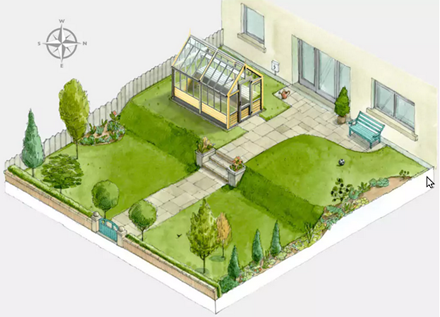
Trees, Fences and Other Structures
When trees, fences or other structures block the sun, then locate the greenhouse to maximize sun exposure. This can be to another part of your yard. Sometimes, a few feet one direction or another can help, especially if the other structures are providing more shade than your plants need.
Avoid locating the greenhouse under trees as this poses the risk of damage to your greenhouse due to falling branches. Trees also will limit sun exposure, which will make many plants leggy as they stretch for the sun.
Louvered windows should be closed on extremely windy days and sealed with a piece of acrylic during the winter months.
Soils, Foundation and Drainage
Install your greenhouse on a flat surface relative to the ground whenever possible. If your greenhouse location is on a hillside or slope, the greenhouse can be set into the hill, so long as there is positive management of surface and ground water that channels water around and away from the greenhouse.
There should be no problems with drainage of the soil on the location of the greenhouse. Water should be free to drain into the soil without pooling. If water will not drain through soil you should use alternative drainage systems, such as French drains.
Maintenance
Throughout the course of ownership of your greenhouse, you will need to carry out annual maintenance such as cleaning the glass and frame, attaching and removing shade cloth, or performing small repairs. Make sure there is at least eighteen inches of free space around the greenhouse to perform maintenance and repairs. This will allow you to move freely around the greenhouse or to place a ladder next to the greenhouse to access the roof, roof vents, or area high at the gable ends. Locating the greenhouse less than eighteen inches to the home, fences, or other outbuildings will prevent you from carrying out routine maintenance.





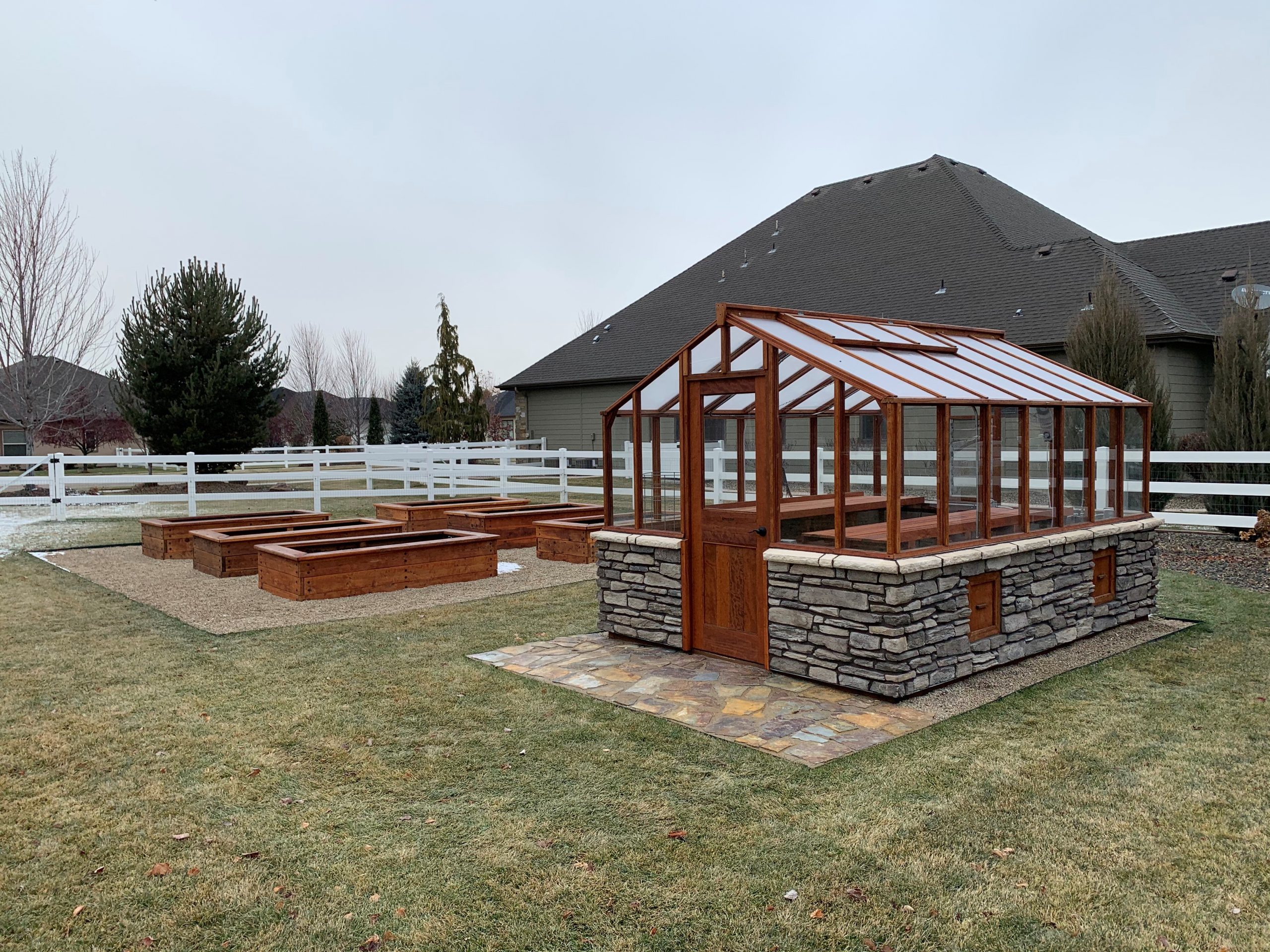
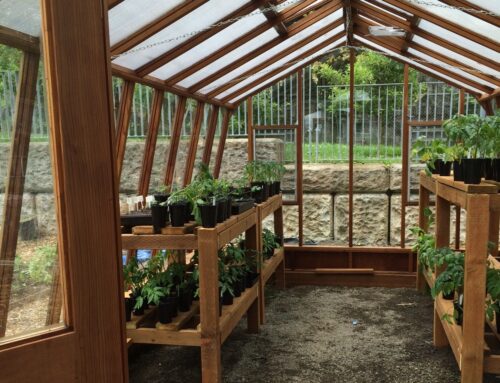
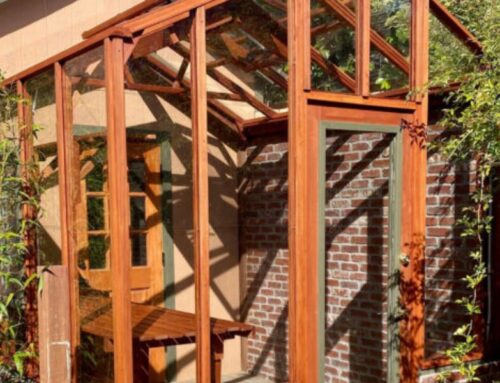
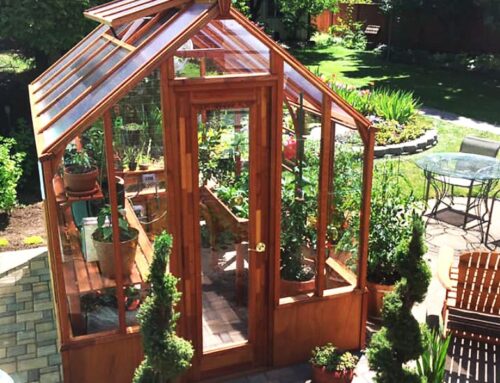
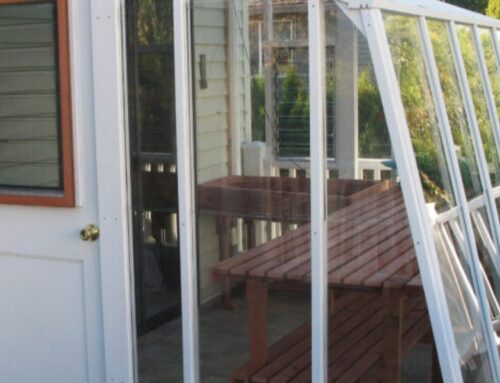
Leave A Comment